Android's fastest and most popular OnePlus flagship smartphone 'OnePlus 6' review, Snapdragon 845 + 8GB memory terminal performance?

OnePlus, known for always offering the best specs and fastest benchmarking devices for Android smartphones at a bargain price, has released the latest model, the OnePlus 6. With the number of flagship terminals with premium prices exceeding 100,000 yen increasing, including the iPhone X, I tried to see how the performance of OnePlus 6, which is about 30% cheaper, is.
◆ Appearance check
The package design with a '6' recess in the white box follows the conventional model. In addition, OnePlus skipped the ominous number '4' in China, so OnePlus 6 will be the fifth generation model counting from

It is common to the OnePlus series that a bright red box appears when you open the box.

The contents were the OnePlus 6 body, a protective case, a power adapter cable, a simple manual and a pin to open the SIM slot.

OnePlus 6 is equipped with a 6-inch over large-screen OLED display. The bezel-less design at the bottom of the display eliminates the home button.
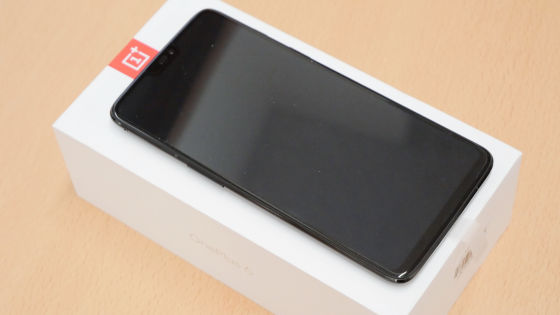
And the top of the display has a 'notch' design like the iPhone X. However, the notch has only a proximity sensor, a speaker, and a front camera, and does not have a TrueDepth camera for face recognition like the iPhone X.
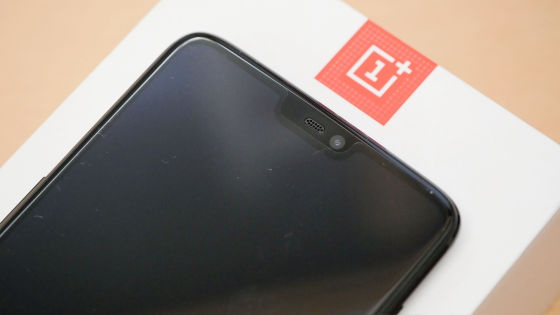
This terminal uses a glass back panel in a color called 'Mirror Black', which makes it look like a mirror.
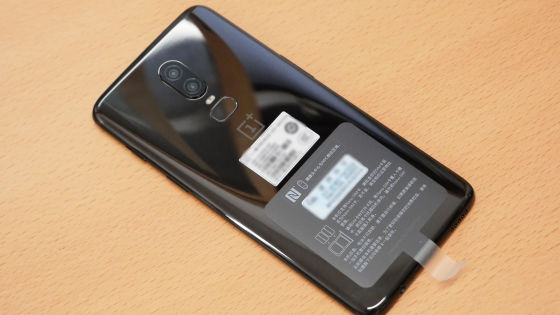
The rear is equipped with two vertical dual cameras. Instead of eliminating the front fingerprint sensor and home button, it has a fingerprint sensor under the rear camera.
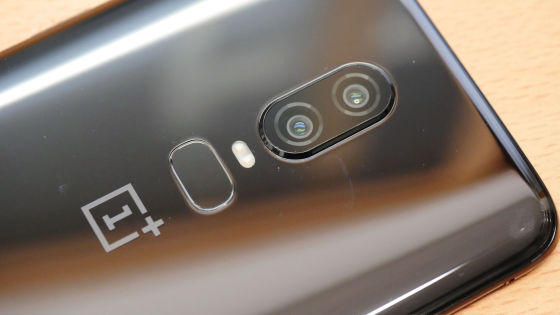
The words 'Designed by OnePlus' below the back panel.
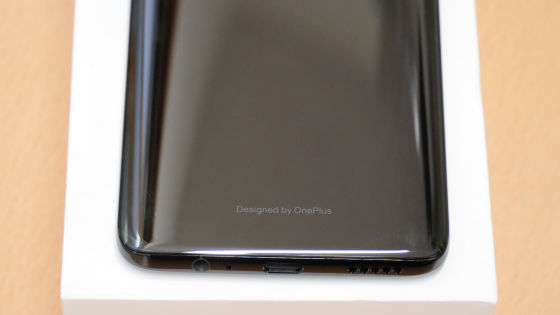
On the left side of the back, from the top, the physical slider and power button. The physical slider has 3 levels, and you can specify silent mode, vibration mode, and so on.
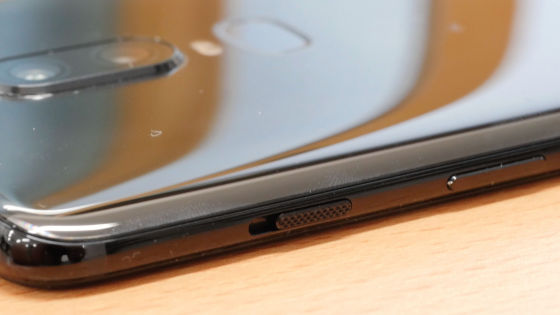
SIM card slot and volume button on the back right.
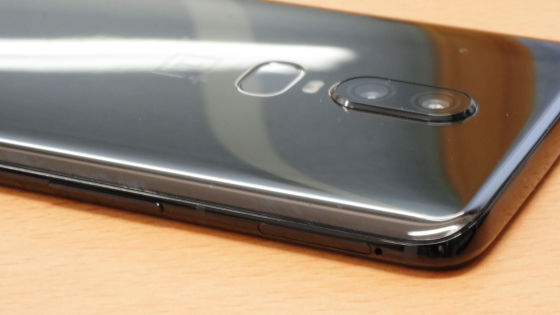
Earphone jack, microphone, Type-C USB port, speaker on the bottom.
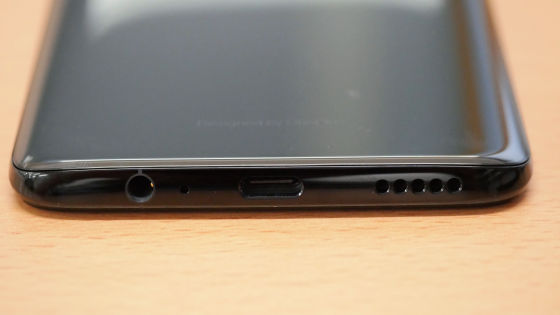
Only a microphone on the top.
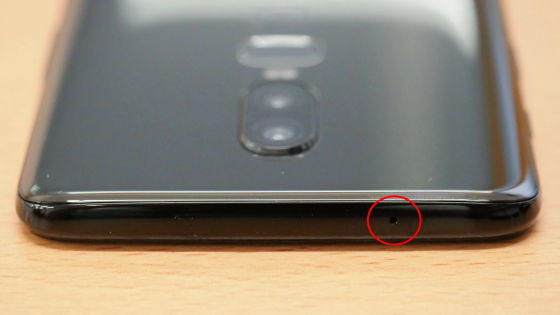
The SIM card is compatible with nano SIM type x 2
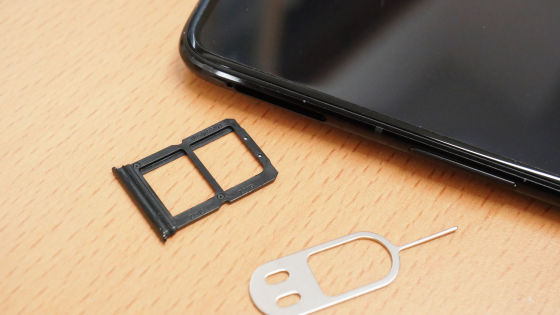
It looks like this when the attached protective cover is attached. It is no longer in a glaring mirror state, but it still has a moderate luster.
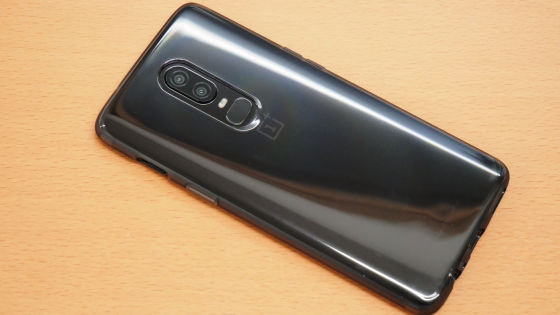
Wide opening to support fingerprint sensor.

As it is a genuine accessory, the position of the hall is perfect.
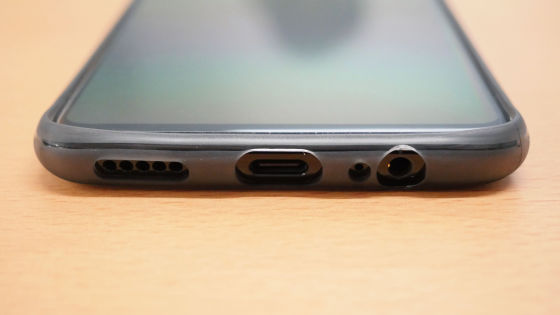
◆ I tried using it
・ Basic specifications
OnePlus 6 is
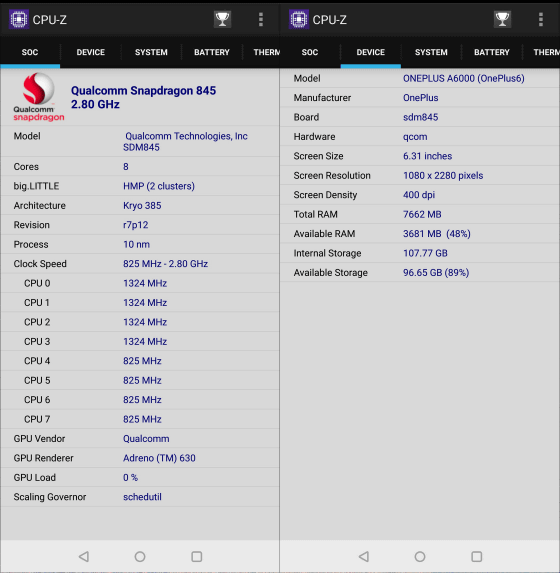
·display
The organic EL display stands out immediately after startup. By removing the notch design & home button, the display area is expanded vertically.
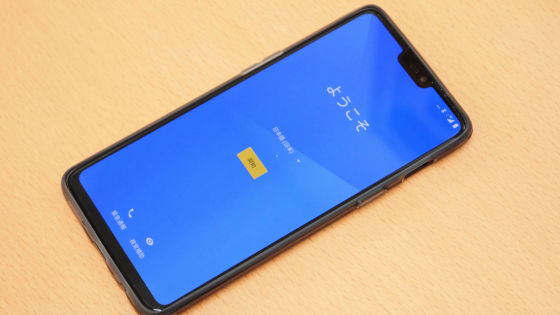
Compared to the previous model OnePlus 5 (right), the vertical expansion is obvious.
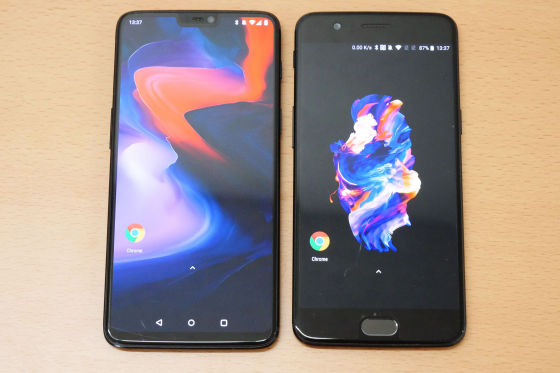
If you display the GIGAZINE top page with the browser application Chrome, you can see that the display area has increased.

By the way, the display area is almost the same as the iPhone X (right).

The notch is smaller on the OnePlus 6. However, it is not a merit because there is almost no utility value at the top of the display including the notch part.

If you say 'I hate notch design', you can select whether or not to have a notch from 'Settings' → 'Display' → 'Notch display'.

·benchmark
Benchmark measurement with '
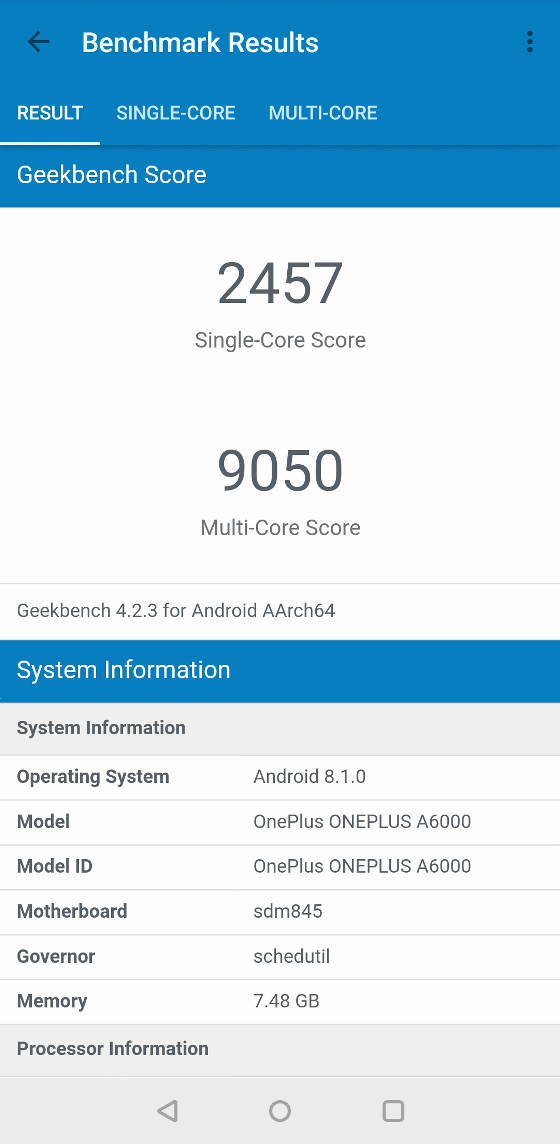
Compared to Samsung's
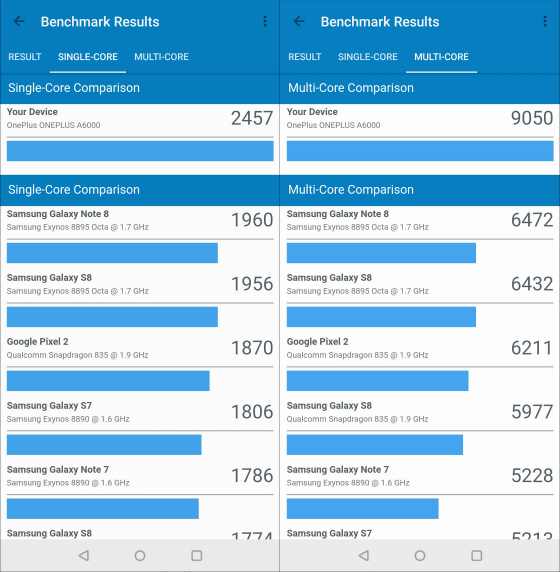
The score for '

·camera
The OnePlus 6's dual camera has been changed to double vertical, similar to the iPhone X. So, I tried shooting with the rear camera of OnePlus 6 while comparing it with iPhone X and OnePlus 5.
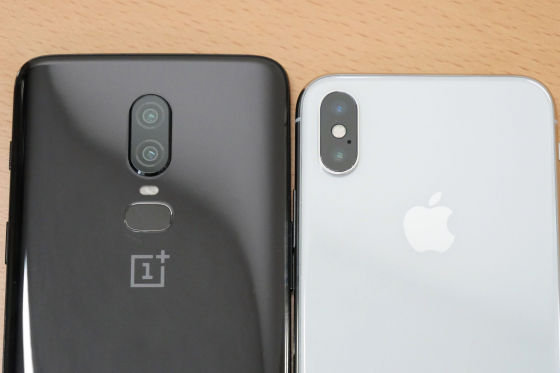
Below, all the comparison photos are in the order of iPhone X (left), OnePlus 6 (center), OnePlus 5 (right) from the left, and the HDR function is turned off for all three models.
When shooting roses outdoors, the iPhone X and OnePlus 6 have sharp outlines of rose petals for a more detailed look.

When shooting with a zoom lens, the brightness is iPhone X and the vividness of color is OnePlus 6.

For close-ups, the OnePlus 6 (center) cuts the flowers beautifully without complaint.
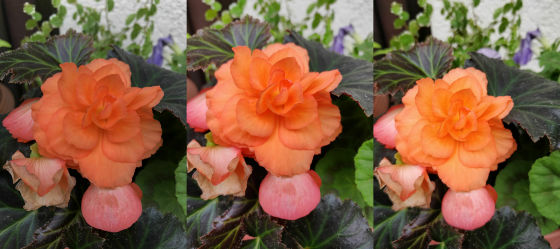
When shooting in dark places, the OnePlus 5 (right) is overexposed, while the iPhone X and OnePlus 6 are able to shoot in bright places. Comparing the ceiling and walls, the OnePlus 6 has a clearer pattern than the iPhone X, and I feel that the OnePlus 6 is leading in dark performance.

OnePlus 6 has a 'portrait mode' that blurs the background to make people stand out, allowing you to easily enjoy bokeh by changing the depth of field.

On the iPhone X (left), I couldn't focus even when I took close-up shots in portrait mode, but on the OnePlus 6 (right), I was able to take close-up shots without any problems.

・ Slow motion movie
OnePlus 6 enables slow motion shooting in full HD (1920 x 1080) and 240 fps. At 240fps, you can shoot the following movies.
・ Charging speed
OnePlus 6 can be quickly charged using the included charger 'Dash Charger'. So, I started charging from the state where the remaining battery level was '9%' and measured the speed.
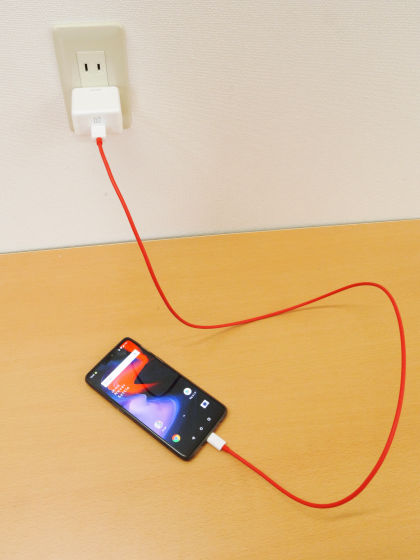
The result recovered to 82% in about 40 minutes. After that, the pace of charging slowed down a little, but it seems that it can be recovered to 90% in about an hour.
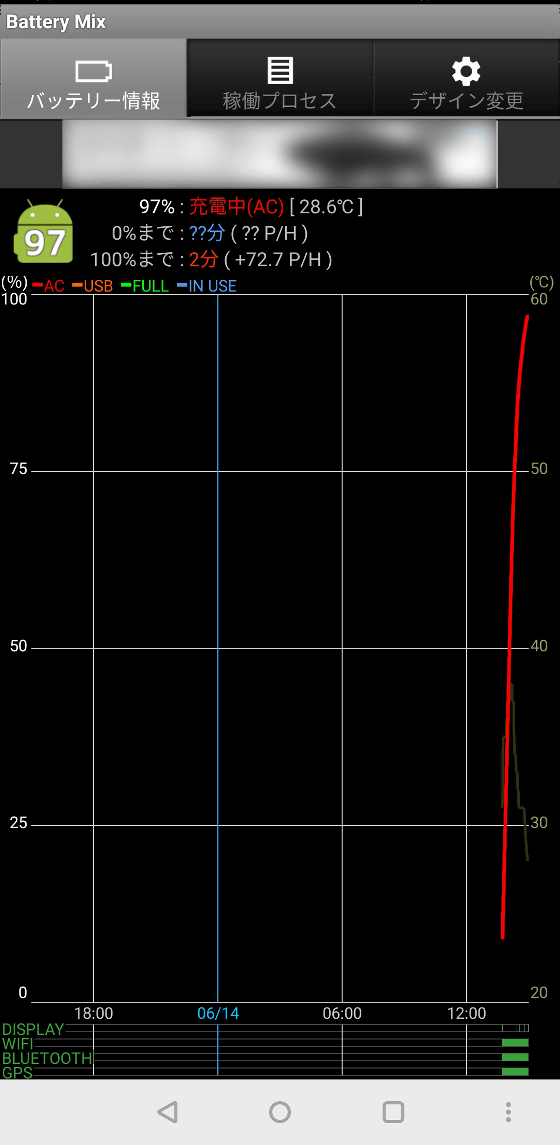
・ Face recognition
OnePlus 6 has the same 'face recognition' feature as OnePlus 3 and OnePlus 5. There is no TrueDepth camera that can measure depth like the iPhone X, and it is not possible to unlock in the dark because it is authenticated with a normal 2D camera, but the unlocking speed is surprisingly fast and it locks before recognizing the lock screen notification Is released. If you want to see the notification, you can request a swipe operation in addition to face recognition on the lock screen, and there is also a function to turn on the screen in the dark to support face recognition.
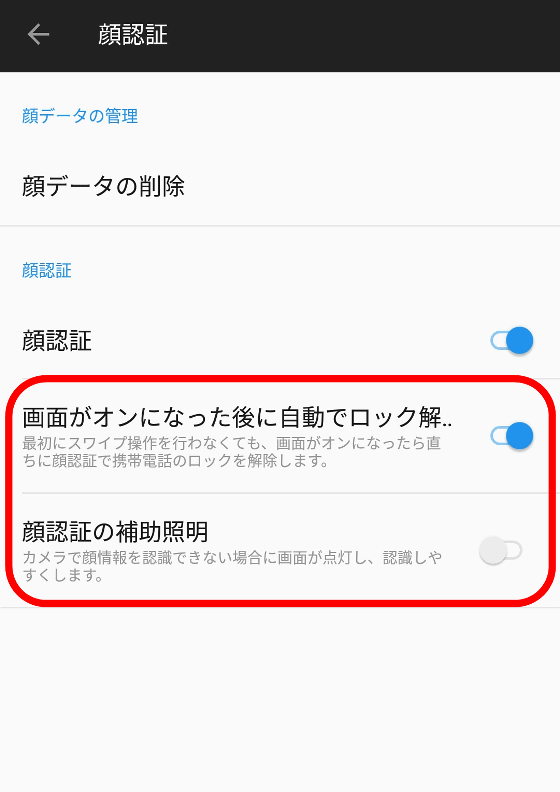
・ Game mode
Continuing from OnePlus 5, 'Game Mode' is installed. It's a pretty nice feature during gameplay, such as shutting out incoming calls and notifications during gameplay, and preferentially assigning networks to the game.
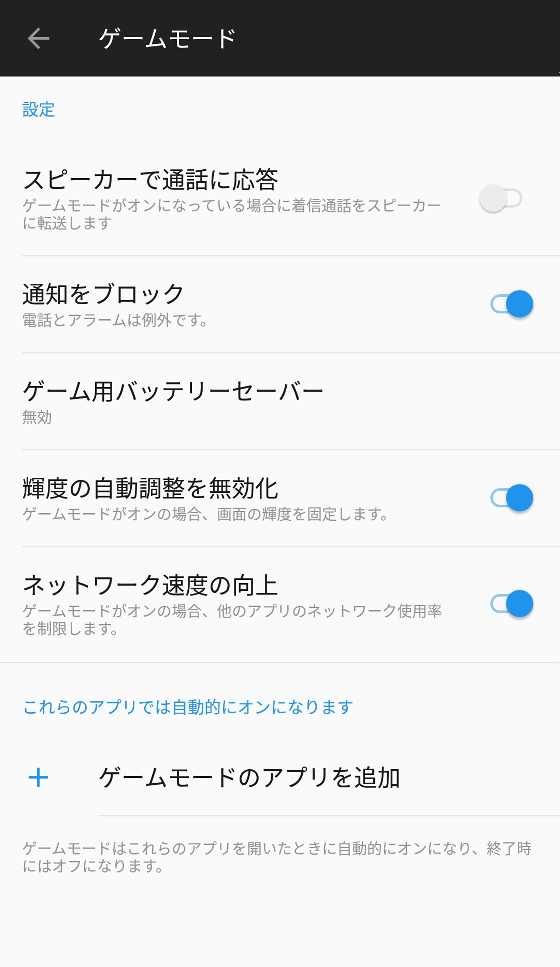
◆ Impression
After using OnePlus 6 for about 10 days, I felt the following in comparison with the previous model OnePlus 5.
On smartphone screens, which often scroll vertically, I was grateful for the expansion in the vertical direction, but my honest impression is that the benefits of increased display area are surprisingly small. It may be because the 5.5-inch large screen OnePlus 5 is approaching the limit of vertical visibility and will not benefit from the expanded area.

However, you can fully benefit from the large screen in situations where the effective area in the vertical direction is narrowed due to anchor advertisements or descending type advertisements.

Also, in OnePlus 6, the fingerprint sensor has moved to the back due to the abolition of the home button, but I feel that it is difficult to unlock due to the horizontally long design. In the case of the fingerprint sensor of the home button, it is easier to use horizontally because it is tapped with the thumb, but in the case of the fingerprint sensor on the back, it should be easier to use vertically. The unlocking operation with the fingerprint sensor is clearly more stressful than the OnePlus 5. Perhaps it means that you can use unlocking with face recognition.
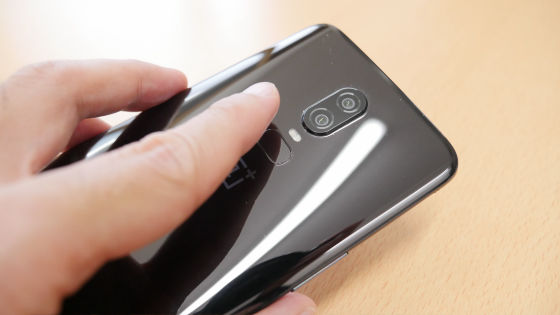
Personally, I felt that the problem was the deterioration of the double tap function, which allows you to assign your favorite functions to the home button and back button. Accessibility to the camera has deteriorated because the conventional 'camera activation' has disappeared from the options.

It is possible to start the camera by pressing the power button twice, but it is certainly less agile and less convenient than starting the camera quickly with one thumb. I don't understand why I reduced the choice of features. Here, I would like to expect a comeback with a software update.

Compared to the OnePlus 5, which has reached 8GB of memory capacity and is equipped with a dual camera with a telephoto mode, the OnePlus 6 has definitely been upgraded in terms of SoC performance, display area, and still images. Image quality. Some people have different tastes, such as the abolition of the home button and the notch design, so it seems that there are not many benefits that OnePlus 5 / OnePlus 5T users should actively switch to. However, for performance-oriented people who want the fastest Android smartphone anyway, it can be said that it is a terminal that can be satisfied without complaint.
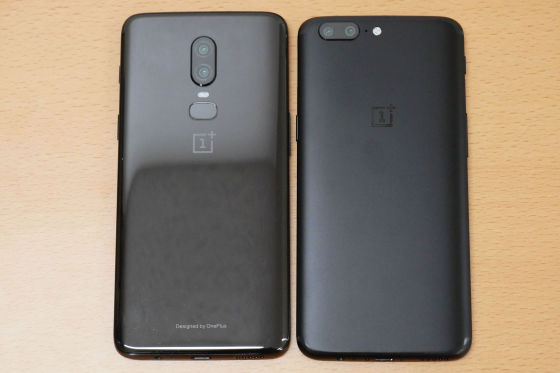
Related Posts:
in Video, Hardware, Smartphone, Review, Posted by darkhorse_log






